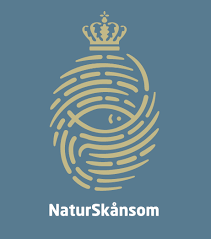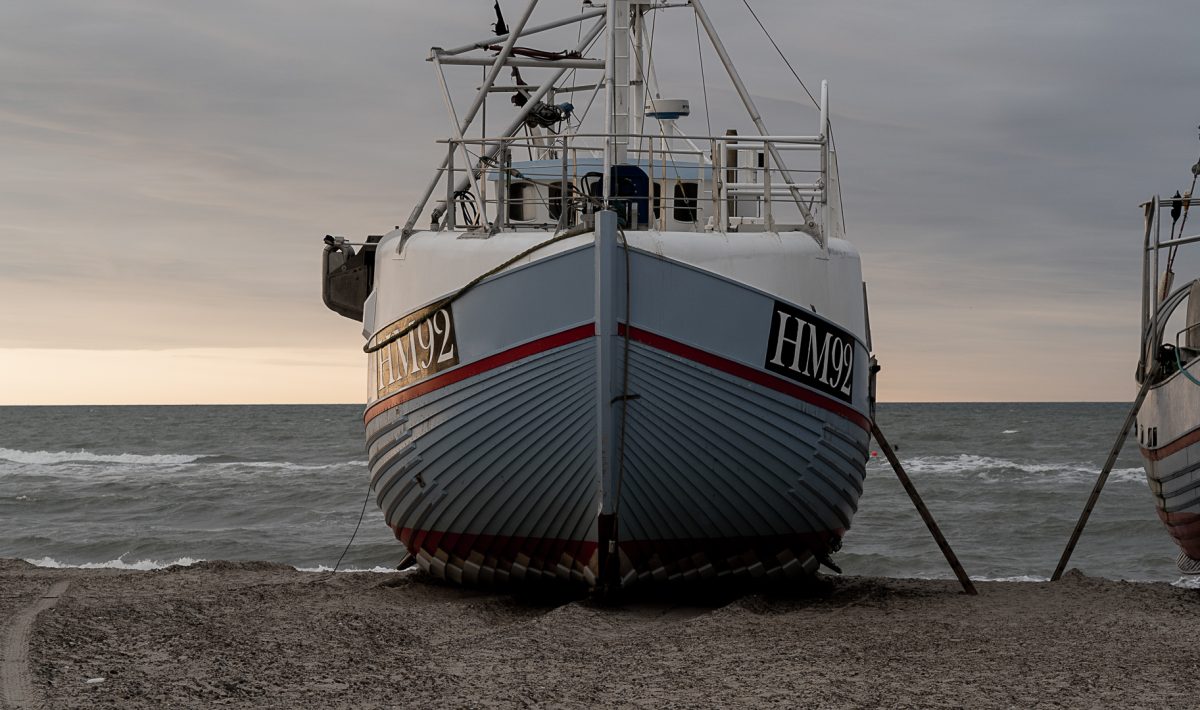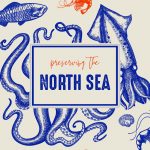Terra Firma
After a nearly 24 hour fishing expedition, we returned to Thorup the following evening. Our new sea legs felt wobbly back on terra firma. Suprisingly, Morton was waving to us from the beach. He was laughing as his young granddaughter hopped around the other ships onshore. Somehow he knew exactly what time to expect us. As though he had read my thoughts, Morton commented on Ander’s method of wayfind using a complex-process based on decades of experience . He explained that the captain was analyzing the wind, currents, recent catches, time of the year, tides and waves to determine the most likely location of the shoals of plaice that he was hunting.
“Anders is the best fisherman in Thorup,” said Morton.
I suspected Morton wasn’t so bad himself.
On Labeling
Back at the house, we cleaned the fish with Morton’s daughter. As we tore out fish guts, laughing at my inept skills and slimy knuckles, she briefly introduced herself.
Alma is following in her father’s footsteps. When we met her, she was in the process of submitting her PhD dissertation. Unsurprisingly, her research had focused primarily on the fishing industry. Specifically, she worked together with the government and other stakeholders to develop NaturSkånsom (nature-friendly). It is the world’s first state-sanctioned label for low impact fishing methods. Gear like we had seen used on the Kikane. The same type of gear, in fact, that the guild required all their members to use.
In her most recent paper, Alma establishes a timeline of events leading up to Denmark’s creation of the label. Along the way, she complicates notions of the value and legitimacy of current modes of ecolabeling. She focuses her attention first on establishing the predominant position of the Marine Stewardship Council (MSC). With its deep market penetration in Denmark, it is widely seen as the “the norm”. This normative factor however has the effect of undermining its own credibility. When the time comes that every fish has an MSC label, will we really be able to say every fish is sustainable? And is this type of reductionist thinking about sustainability even sustainable? With its pass/fail rating system, it leaves out any distinctions for fishing operations using more progressive methods of procurement. Therefore MSC effectively benefits most the large-scale fishing operations which just manage to make the mark.

The new label provides a space to legitimize fishermen who use gentle methods that go above and beyond the benchmark that the MSC sets. This competition between “sustainable” and “more sustainable” creates a complex power dynamic within the industry. Who can claim dominance when one represents the majority and the other represents the ideal? And what can the consumer glean from such novel identities?
In the final analysis, Alma seems to be saying we need to imagine a future in which emerging practices of greater sustainability play a leading role in the establishment of new guidelines. This contradicts the predominant belief that the loudest voices with the deepest pockets should prevail. Her paradoxical proposal sounded a lot like Morton’s own ideas about displacing power in the fishing grounds near Thorup.
As I listened to her passionate description, I couldn’t help but notice that, in addition to scholarly thinking, an activist streak also seemed to run in the family.
Dinner is Served
After preparing the catch of the day, we sat down together with the families of Morton and Anders to share a meal. Morton described the practice of the captains who spoke in codes on the radio to deflect unfriendly boats from discovering their position. He also referenced the practice of international, large-scale boats using GPS to track Anders. They were taking their knowledge not from their own experiences, but from his. And they weren’t friendly about it. In a disturbing tale, he revealed that Anders had even been attacked by a trawler captain who had intentionally run his 500 ton ship through Anders’s nets. Somehow it felt like we were talking about war-time intelligence gathering more than we were talking about fishing.
“This is the new battle at sea,” said Morton.
He brought out his laptop. Using a GPS website called Vesselfinder, he showed us the route that the ship had taken while we were on board. Seeing it displayed on the screen offered us an image of the practice in which we had participated. The looping figures on the map matched the motion we felt as the boat turned in large circles while letting out the Danish Seine. The long lines between shore and open waters on the screen reminded me of the silent moments in the dark holding back bouts of seasickness. I snapped a picture with my phone of the only artifact of our journey–that is, besides the delicious turbot and wonderful hake about to disappear on our plates. Then Morton highlighted the Dutch trawler moving in a direct line toward the fishing grounds we had just visited near Thorup.
The captains on those boats were looking at the same site we were looking at. That same blue, digital map. It represented journeys taken and being taken. But there was something off about it. Something disturbing. I looked up at the heavy beams hanging over the dining room table. I remembered the numbers etched into them. They were also like coordinates. And they also created a framework within which to move. But unlike the map on the screen, they were merely positions without journeys. The numbers themselves led nowhere. It struck me that they revealed nothing about that house, its occupants or their lives.
I wanted to get to the bottom of what bothered me about the satellite maps on the screen and the beams holding up the roof. There was some connection I was missing and needed to discover. But, now wasn’t the time. Shutting the laptop, we returned to our plates and retold tales of journeys to far away places and right there in the Skaggerak.
continued in part 3
Citations
Autzen, M. H., & Hegland, T. J. (2021). When ‘sustainability’ becomes the norm: Power dynamics in the making of a new eco-label for low-environmental-impact, small-scale fisheries. Marine Policy, 133, 104742.
Ingold, T. (2002). The perception of the environment: essays on livelihood, dwelling and skill. routledge.





Recent Comments